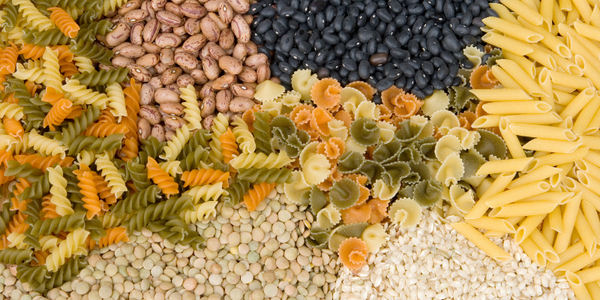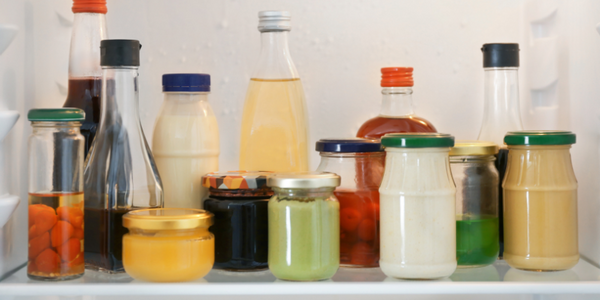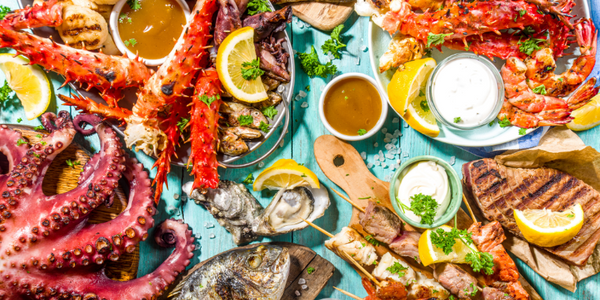Posted on April 21 2021

Food is a necessity for all living creatures. Unfortunately, the way humans produce and consume food and other resources is extremely wasteful. While global efforts are underway to address this issue, individuals can help by adopting sustainable ways of consuming food.
Why is sustainable food consumption important?
According to the United Nations, about one third of food produced globally, worth $1 trillion, ends up as waste because of poor transportation and harvesting practices and tossing out by retailers and consumers. If these trends continue, there will be insufficient natural resources to meet the needs of a growing human population.
According to ReFED, an organization that tracks food waste in America, 63 million tons of food goes to waste each year. This represents $218 billion (1.3% of gross domestic product) that farms, businesses, and consumers spend to grow, process, transport, and dispose of food that is never eaten. In terms of weight, households account for 43% of food wasted annually.
Food waste that is not reused ends up in landfills, creating methane gas. Food waste can affect the health of all living creatures on earth. Thus there is an urgent need to reduce food waste. In fact, Goal 12 of the United Nations' sustainable development goals set in 2015 addresses this issue. Goal 12 relates to sustainable production and consumption. One target for Goal 12 is to halve per capital global food waste by 2030 when, according to projections, the total population will be around 8.5 billion.
How can you contribute to sustainable food consumption?
Sustainable food consumption is about how you buy, consume, and dispose of fresh produce and other items. These choices can lead to a better quality of life for you and a healthier planet where the needs of future generations can also be met.
The pandemic arising from COVID-19 has led many people to question the way they buy and use food. Factors such as social distancing, minimizing social interactions, working from home, and financial constraints have led to people making fewer trips to buy food. They also have more time to cook meals at home. They tend to use up and make do with what they have. These are positive signs that lead to better use of resources and less waste.
Here are some ways you can contribute to sustainable food consumption:
1. Think before you buy
Reduce food waste by making a meal plan for the week ahead. Consider meals for kids, main meals, and days you plan to get takeout or eat out. Include items and ingredients needed to make meals on your shopping list. Preparing a meal is a pleasant experience when the items listed in a recipe are all at hand.
Think local. Not only do you get better tasting fresh produce, but you will also help local farmers. Buying local also means you are contributing to a lower carbon footprint. Consider growing your own home garden or indoor garden that can provide you with the fruits, vegetables and herbs your family enjoys most.
Before you buy food items in bulk or at reduced prices, consider whether you will use them up right away or vacuum seal them for another day. Consider the cost savings against the shelf life of the food and the storage space required.
2. Use up your food
How you buy and use food can help reduce costs and wastage. Use your creativity to experiment and prepare healthy and tasty dishes with the items you buy and the spices and condiments available.
Smaller food servings can help prevent uneaten food from getting thrown out. Save extra food for another time or use it in a salad or sandwich.
Buy vegetables and fruits when they are in season, as they are fresher and lower in price. Use them to make jams and preserves, and can or pickle vegetables and fruits for later use. You can also vacuum seal fresh vegetables and other foods to eat later.
Use the imperfect-looking produce in your garden or the supermarket to make soups, sauces, and other dishes. They are just as tasty as those with more visual appeal. Not sure whether a fruit or vegetable is safe to eat? The website EatOrToss.com provides useful information to ease your concerns and recipes to use up vegetable scraps and extra food.
Aim to consume all perishable items before you next head to the store. Make stock with vegetables and parts of meat that you did not use when cooking. Look for other ways to use fruits, such as in smoothies or as natural cleansers.
Collect unwanted skins, peels, and parts of fruits and vegetables for composting. Use a composter or contribute to a community program. Then use your compost around your home.
3. Organize your kitchen
A mindset of "waste not, want not" can help to make the best use of the food you buy. Be organized when cooking meals, storing food items, and using what's available.
When freezing food, date and arrange items so you use the older ones first. If you batch-cook meals or have leftovers, make sure you consume them while still fresh. Spoiled food that gets tossed is a waste of time and resources.
Organize your fridge and pantry shelves. This way, you will remember to eat leftover food, consume food while still fresh, and know when stocks are running low. Refer to the Department of Agriculture's Food Safety and Information Service to understand food labeling such as "best before" dates. Also refer to our Extended Food Storage Time Chart to learn how long vacuum sealed foods can last.
Rather than make a list the day you shop or order groceries, keep noting items you need throughout the week. Notice you are low on potatoes when making a stew? Add it to your list. When you are ready to go shopping, you already have a list of some items you need.
Conclusion
Conditions relating to COVID-19 have led to changes in how people work, travel, and interact. Individuals and industries are improvising and innovating to meet these changes. Many people are looking for ways to reduce waste and save resources. They can make a significant impact by adopting responsible food habits.
Such shifts in thinking can lead to a sustainably-minded society. The systemic changes required for sustainable production and consumption on a mass scale will then follow. Individual actions can help make this happen. These initiatives will help towards the goal of halving global food waste by 2030.





0 comments